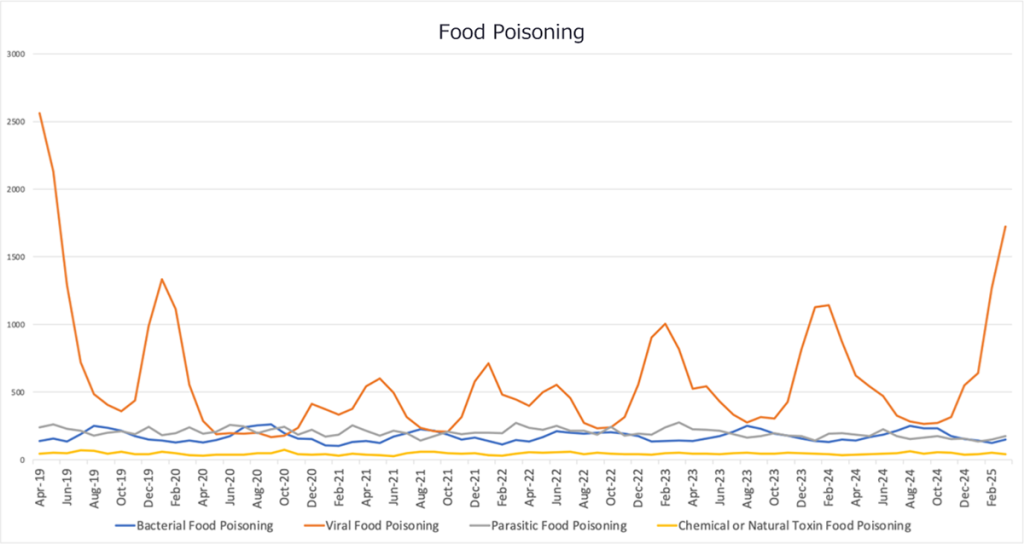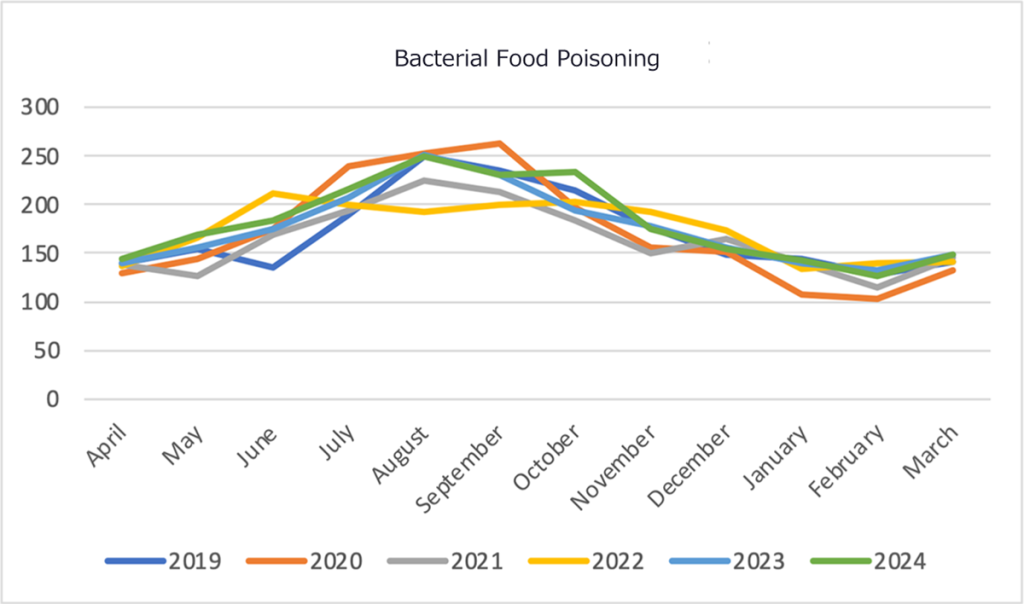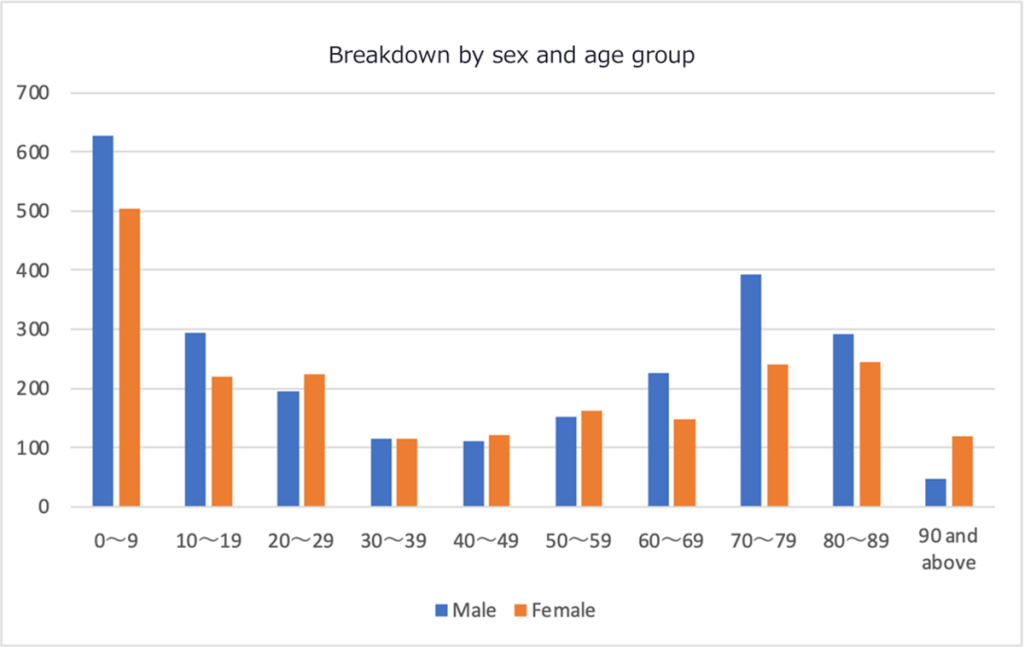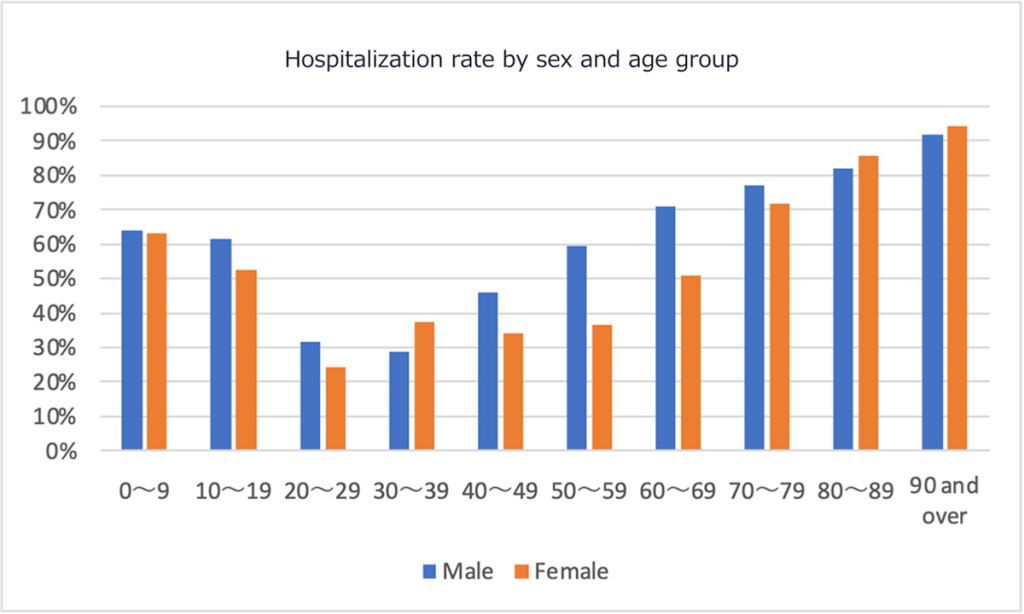
The Reality of Food Poisoning: Characteristics by Type, Seasonality, and Age
Summer, and the lingering heat that follows, is a time when we need to be especially careful about food poisoning.
During the summer, when temperatures and humidity rise, bacteria multiply more actively, increasing the risk of food poisoning outbreaks. Food poisoning is a health issue that mainly causes acute symptoms like vomiting, diarrhea, and abdominal pain due to microorganisms such as bacteria or viruses, or the toxins they produce.
Food poisoning can affect people regardless of age or gender, and in some cases, it can lead to severe illness or group infections. So, using MDV data, we investigated trends in patient numbers by type of food poisoning, monthly changes in bacterial food poisoning cases, patient numbers by gender and age, and hospitalization rates.

Data Period: April 2019 to March 2025
Only hospitals with complete data for the specified months
Number of Facilities Meeting Base Criteria: 363
Target Diseases:
“Bacterial Food Poisoning” such as Salmonella enteritis, Staphylococcal food poisoning, etc.
“Viral Food Poisoning” such as Rotavirus enteritis, Norovirus acute gastroenteritis, etc.
“Parasitic Food Poisoning” such as Giardiasis, Anisakiasis, etc.
“Chemical or Natural Toxin Food Poisoning” such as Ciguatera fish poisoning, Scombroid fish poisoning, mushroom poisoning, etc.
Overall, viral food poisoning has the highest number of cases, with a sharp increase every winter. This is particularly noticeable from December to February, likely due mainly to infections like Norovirus. On the other hand, bacterial food poisoning occurs at a steady level throughout the year, with a slight increase during the summer.
Parasitic and chemical or natural toxin food poisoning have low case numbers overall, and no clear seasonal patterns, though they continue to occur sporadically. These often depend on specific foods or cooking methods, making large-scale outbreaks unlikely.
Next, we looked at monthly trends in patient numbers for bacterial food poisoning.

Data Period: April 2019 to March 2025
Only hospitals with complete data for the specified months
Number of Facilities Meeting Base Criteria: 363
Target Diseases: A020: Salmonella enteritis, A050: Staphylococcal food poisoning, A051: Botulism , A052: Clostridium perfringens food poisoning, A053: Vibrio parahaemolyticus food poisoning, A054: Bacillus cereus food poisoning, A058: Other specified bacterial food poisoning, A059: Bacterial food poisoning, unspecified
In every year, cases start increasing around June, peaking from August to September, showing a clear seasonal pattern. In particular, 2020 had the highest level at 263 cases in September, standing out compared to other years. In contrast, 2022 stayed around 200 cases, at a relatively low level. In the more recent 2023 and 2024, cases rose back to around 250, indicating a somewhat higher trend in recent years. Throughout the year, cases drop to around 100 from December to March in winter, but they never reach zero, with a certain number continuing to occur.
Next, we examined bacterial food poisoning by gender and age.

Data Period: April 2019 to March 2025
Only hospitals with complete data for the specified months
Number of Facilities Meeting Base Criteria: 363
The highest number of patients is among children aged 0-9, with a sharp decrease in older age groups. However, cases increase again from the 60s onward, peaking again at 70-79 years old. This shows that occurrences are higher in immunologically vulnerable groups like children and the elderly.
Looking at gender differences, males are more common among 0-9 year olds and the elderly, while females are slightly more common in the 20-50 age range.
Finally, we investigated hospitalization rates for bacterial food poisoning by gender and age.

Data Period: April 2019 to March 2025
Only hospitals with complete data for the specified months
Number of Facilities Meeting Base Criteria: 363
Hospitalization rates for bacterial food poisoning vary greatly by age. For both males and females aged 0-9, it’s over 60%, indicating a tendency toward severe cases. The rate decreases in the 10-30s, but rises again from the 40s, exceeding 70% in the 70s and reaching 90% for those 90 and older, showing that hospitalization needs increase with age. In terms of gender differences, males have higher rates in younger to middle-aged groups, while females are slightly higher in the elderly, possibly influenced by women’s longer average lifespan.
Note: This article was published on September 1, 2025.
Data survey and analysis tailored to your specific requests
Databases, data analysis requests, and more.
© Medical Data Vision Co., Ltd. All Rights Reserved.





